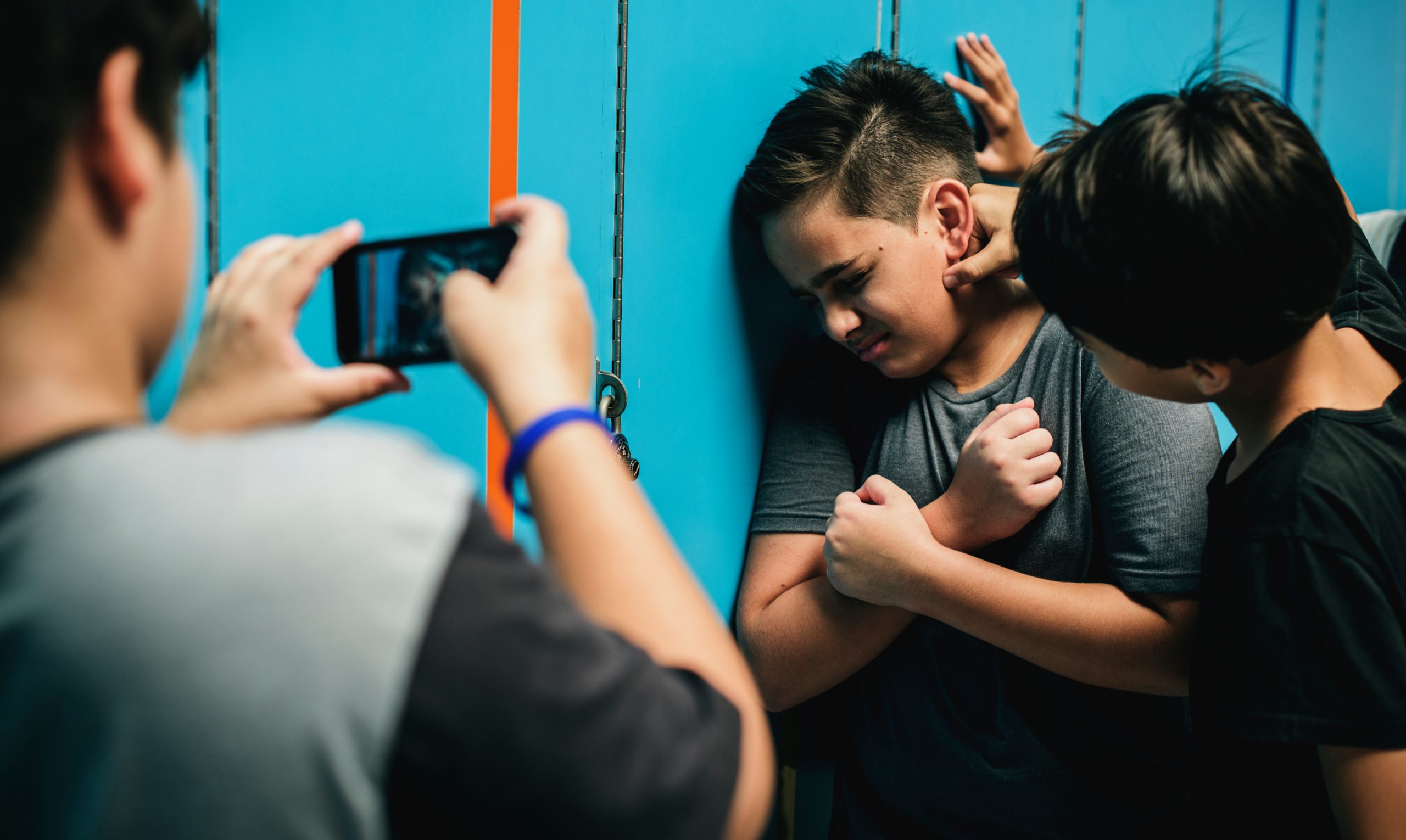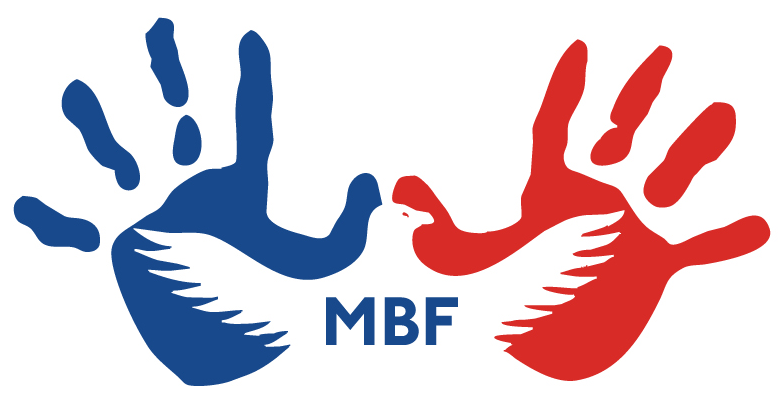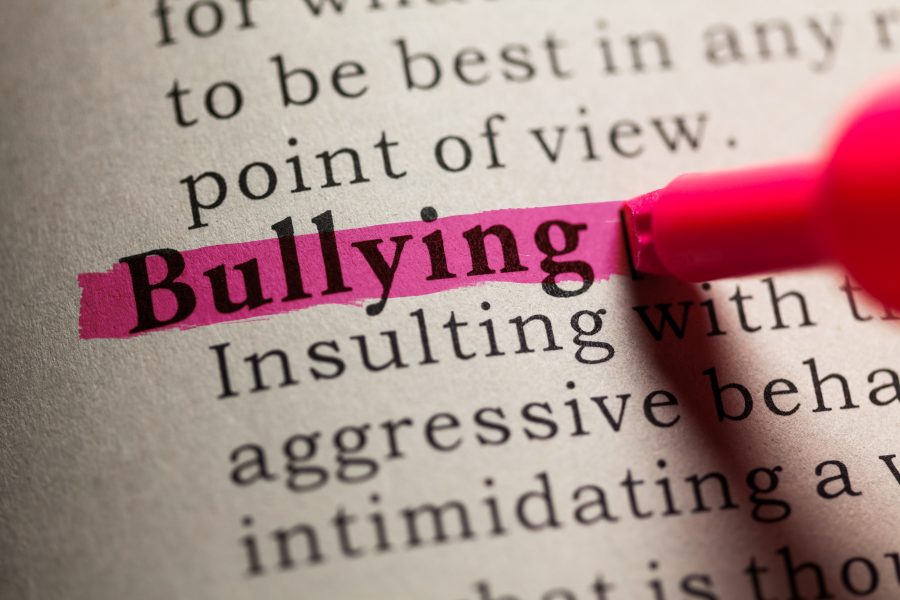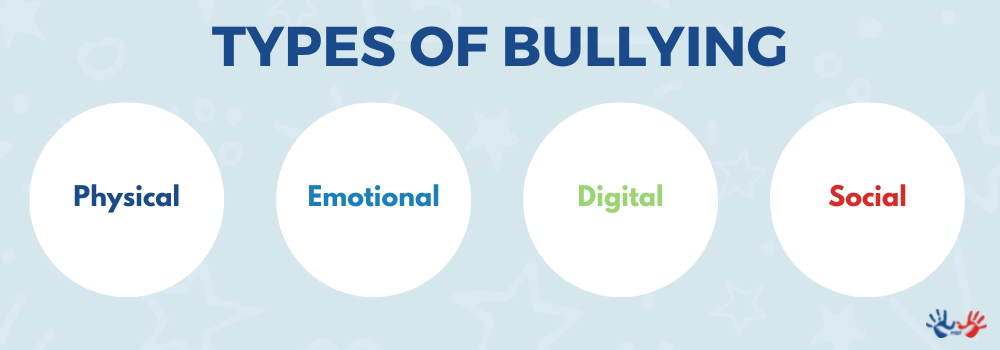Bullying is happening everywhere, and it can happen to anyone. In an effort to protect children, it is important to understand the dangers of bullying, cyberbullying, and digital abuse, as well as related indicators, because students often do not report these behaviors.
- 13 million students will be bullied in the United States this year.
- 1 in 4 students will be bullied, and 1 in 3 will be cyberbullied.
- Research shows that in over half of bullying situations (57%), when someone intervenes, the bullying stops within 10 seconds.
What is Bullying?
Bullying is defined as repeated, negative, and hostile or aggressive behavior by one or more students with a real or perceived imbalance of power over another student for an extended period of time.
There are four different types of bullying:
- Physical
- Verbal
- Social isolation
- Cyberbullying
What is Cyberbullying?
Cyberbullying is threatening, harassing, or aggressive behavior by one or more youth or teens toward another using digital technology such as the Internet or cell phone. Unlike bullying, cyberbullying does not have to be a repeated behavior nor does the behavior need to take place between persons of unequal power.
Cyberbullying can include:
- Spreading rumors or posting false information
- Sending harassing messages
- Posting compromising or manipulated images
- Persuading others to join in cyberbullying the victim
- Posting the victim’s private information
- Bullying others while impersonating the victim
Is Bullying really that bad?

Bullying has become a problem with enormous impact in the US.
- 13 million students will be bullied in the US this year
- 160,000 students miss school daily for fear of being bullied
- 1 out of 4 children are bullied (US Dept. of Justice)
- Every 7 minutes a child is bullied on a playground
- Between 50% and 77% of students report having been bullied
- Of teachers, 25% see nothing wrong with bullying and consequently intervene in only 4% of bullying incidents
- 85% of bullying is not responded to appropriately or at all
Cyberbullying has also become a tremendous problem. Whereas victims of bullying can escape the torment, at least for several hours each day, those who are victims of cyberbullying can be targeted by their attackers 24 hours a day, 7 days a week. A peer one day can become a predator the next day with terrible and tragic consequences.
- 1 out of 5 children is or will be cyberbullied (US Dept. of Justice)
- 43% of teens, ages 13 to 17, have experienced cyberbullying in the past year
- 1 million children were cyberbullied on Facebook during the past year
What is the impact of Bullying?
- Victims often suffer academically and from long-term psychological effects
- Bullies often go on to commit crimes – former bullies have a 4-fold increase in criminal behavior by age 24
- Both victims and bullies may later become depressed or even become suicidal
- After interviewing 41 school shooters in 37 incidents, the Secret Service found that 2/3 had been bullied, and their attacks were motivated by a will to seek revenge
The first step in changing this epidemic of social torment is understanding the true depth of its impact on our children. Hopefully, now you have a better understanding of the reality of bullying.
Additional Resources on Bullying:
How is Bullying Different in Younger vs. Older Grades
Cyberbullying – When Peers are Predators
Signs Your Child May Be the Target of Bullying
Why Children Become Bullies and Why They Target Certain Kids
Effective Bullying intervention by Adults
Bully Bystander: How and Why Other Students Should Intervene
Sources:
1 National Center for Educational Statistics, 2019
2 National Center for Educational Statistics, 2019
4 “Bullying and peer victimization at school: Perceptual differences between students and school staff.” School Psychology Review





